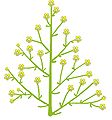Note: This is a project under development. The articles on this wiki are just being initiated and broadly incomplete. You can Help creating new pages.
Plant Identification
To properly identify a plant, the whole plant has to be carefully observed. The physical form and external structure have to be studied to see what categories the plant fits into. These are the features that need to be observed.
Contents
[hide]Habit (form)
- Herb: Plants that have non-woody stems. Herbs can be annuals or perennials
- Shrub: Woody plants that are less than 6m tall and have multiple stems. Shrubs are perennials.
- Tree: Perennial woody plants with an elongated trunk with leafy branches at the top.
- Climber: Plants with stems that are unable to stand erect, and use trees and other objects to climb up. There are herbaceous as well as woody climbers (lianas)
Leaf type
- Simple
A leaf that has an undivided blade. The leaf may be lobed but does not form distinct leaflets.
- Compound
The leaf blade is separated into separate leaflets. There are several ways in which the leaflets may be arranged on the rachis.
- Pinnate (odd): Leaflets are attached along the rachis; there is a terminal leaflet and therefore an odd number of leaflets.
- Pinnate (even): Leaflets are attached along the rachis; there is no terminal leaflet and therefore an even number of leaflets.
- Bipinnate: Leaflets that are further subdivided in a unipinnate arrangement.
- Tripinnate: Leaflets that are further subdivided in a bipinnate arrangement.
- Trifoliate: A compound leaf made up of three leaflets.
- Palmate/Digitate: A type of compound leaf in which the leaflets all originate from the same point, like the fingers from the palm of the hand.|
A way to distinguish simple leaves from compound leaves is to check for axillary buds. Only simple leaves would have an axillary bud. Pinnate leaves will not have them.
Leaf arrangement
- Alternate: One leaf attached at a node, arranged alternately on the stem.
- Opposite: A pair of leaves attached at a node, arranged oppositely.
- Whorled: Three or more leaves attached at a node, in a radial manner.
- Basal Rosette: Some plants keep their leaves in a tight rosette close to the ground, where the leaves all seem to radiate from a common point. This may be one stage in the life of the plant or it may spend its whole life in that form.
Leaf Shape
Leaves come in a variety of shapes and sizes.
Leaf attachment
The point of attachment of a leaf to a stem.
Leaf margin
A leaf can be entire (one with a smooth edge) or it can be of the following types.
Inflorescence
The grouping or cluster of flowers on a branch or a network of branches.

















































